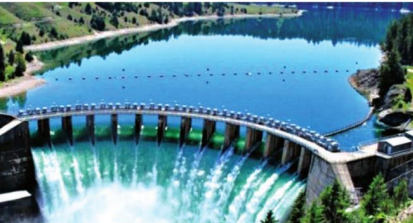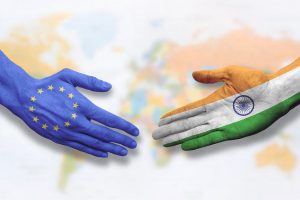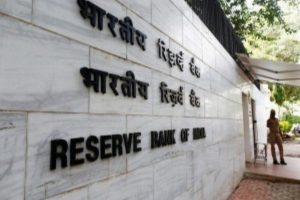The Nepal Electricity Authority (NEA) and Nepali private hydropower investors appeared enthused alike by the news that Bangladeshi Prime Minister Sheikh Hasina during her India visit last week asked India to help her country import electricity from Nepal. India’s facilitation in this regard is crucial, as the country must either provide a wheeling facility or allow the construction of a dedicated transmission line via its territory that separates Nepal and Bangladesh.
However, this aspect of “cooperation” failed to feature among the seven bilateral pacts that India and Bangladesh signed at the conclusion of Hasina’s visit. The issue of transnational electricity trade beyond the adjacent neighbour has been discussed for at least half a decade now. There has been very little tangible progress since. But lately, the interests of two of Nepal’s neighbours seem to be gradually converging.
Advertisement
Indian energy major GMR Group, which has held the power development license of the 900 megawatt Upper Karnali Hydropower Project for the last 14 years due to its failure to make financial closure, has reportedly finalised a power sales agreement with the Bangladesh Power Development Board for the supply of 500 megawatts to Bangladesh and the rest to NTPC Vidyut Vyapar Nigam of India out of the plant’s 792 megawatt capacity.
Another state-owned Indian company Sutlej is expected to build a project of about 2,000 megawatts in the next five to seven years. This certainly puts an obligation on the Indian government to assist its own investors to find a market for the produced power. According to a moderate estimate, Nepal’s hydropower production capacity will reach about 13,000 megawatts in the next five years, while domestic demand is expected to be about 3,000 megawatts in the same period.
This scenario, at least in theory, presents a lucrative prospect of clean energy export from Nepal to her neighbours. Within a year, Nepal, on a token basis, plans to export 50 to 100 megawatts to Bangladesh. This undoubtedly is a very rosy picture portrayed by the industry and has an almost obsessive orientation towards exports. Among many issues surrounding Nepal’s hydropower economy, some are more deeply critical than others.
First, Nepal’s current installed capacity is 2,200 megawatts, and during the peak (monsoon) season, the country exports about 400 megawatts of electricity. Nepal has a population of around 29 million of which about 60 per cent have access to electricity. The installed generating capacity, including those of private producers, is only around 1,074 megawatts.
Moreover, about 98 per cent of the electricity produced in Nepal comes from hydel projects, and therefore, is clean. But the per capita electric power consumption in Nepal is the lowest in the world – less than 200 kWh (kilowatt hours) compared to approximately 1,200 kWh in India, about 325 kWh in Bangladesh and the world average of 3,250 kWh.
Even if domestic consumption could be raised to 3,000 megawatts, the per capita consumption will only come near 900 kWh, which could still be very low five years down the line, compared to the world average which is growing pretty fast. Second, the impediments to evacuating power, by the private sector and foreign companies in particular, are increasingly becoming daunting.
Government agencies and the main counterparty to private investors, the NEA, are often hesitant to provide the exact data on losses caused by lack of transmission lines.
But the private sector laments that about 100 megawatts is wasted for failure to connect to the national grid. There are several projects short of only a few pylons out of the several hundred that are left to be constructed due to disturbances and disputes over land compensation. Locals have started demanding an unrealistically exorbitant price even for absolute wasteland. If these demands are not fulfilled, there is an evolving general trend of obstructing the project.
The government appears reluctant to resolve this crisis even though it has been an irritant to almost all freshly launched projects. At least it can facilitate the process by fixing a land price ceiling. Even for international power trade, high-capacity transmission lines remain a key bottleneck. The third is a huge investment gap. Hydropower production is highly capital intensive. Nepal, however, has successfully attracted substantial private sector investment, both domestic and foreign.
The private sector claims that it contributes more than 56 per cent of the electricity in the system, and 215 projects with a combined capacity of 9,000 megawatts are in different phases of development with private investment. The energy sector is also the single largest attractor of foreign direct investment (FDI).
A study conducted by Nepal Rastra Bank states, “The electricity generation sector, particularly the hydropower sector in Nepal, has been emerging as a preferred sector for FDI in recent years. The latest survey shows that 27.5 per cent of FDI stock and 36.4 per cent of the total paid-up capital is in this sector.
Moreover, the hydropower sector has also attracted other sources of external financing such as foreign loans in addition to FDI.” But the overall inflow of FDI has not been impressive in recent decades. Electricity is not an end product; it is an inevitable input for industrial production and productivity. Nepal awaits transformative improvement in her industrial output for the desired economic gains. But Nepal’s private sector suffers from highly discriminatory tariff rates for households and industrial users.
The latter are charged about Rs 30 per unit, three times more than what the average household rate. The industrial and commercial sector consumes about 42 per cent of the total output. Nepal’s private sector has been demanding for long that the price they are being charged must not exceed the rate that foreign importers pay.
The price in the export market, now only in India, barely crosses Rs 8 though it is dynamic. This indeed is antithetical to the idea of promoting consumption. Reform in the NEA is overdue. The plan of vertically splitting it at least into three separate entities overlooking generation, transmission and distribution is nowhere near implementation. This has substantially held back the potential efficiency of the organisation.
Until these issues are addressed with due urgency and scope, Nepal’s prosperity may remain a mere pipedream. There is even a larger risk of the country suffering from the proverbial “Dutch disease” if it dreams of becoming rich by exporting electricity rather than using it for industrialisation and growth.











